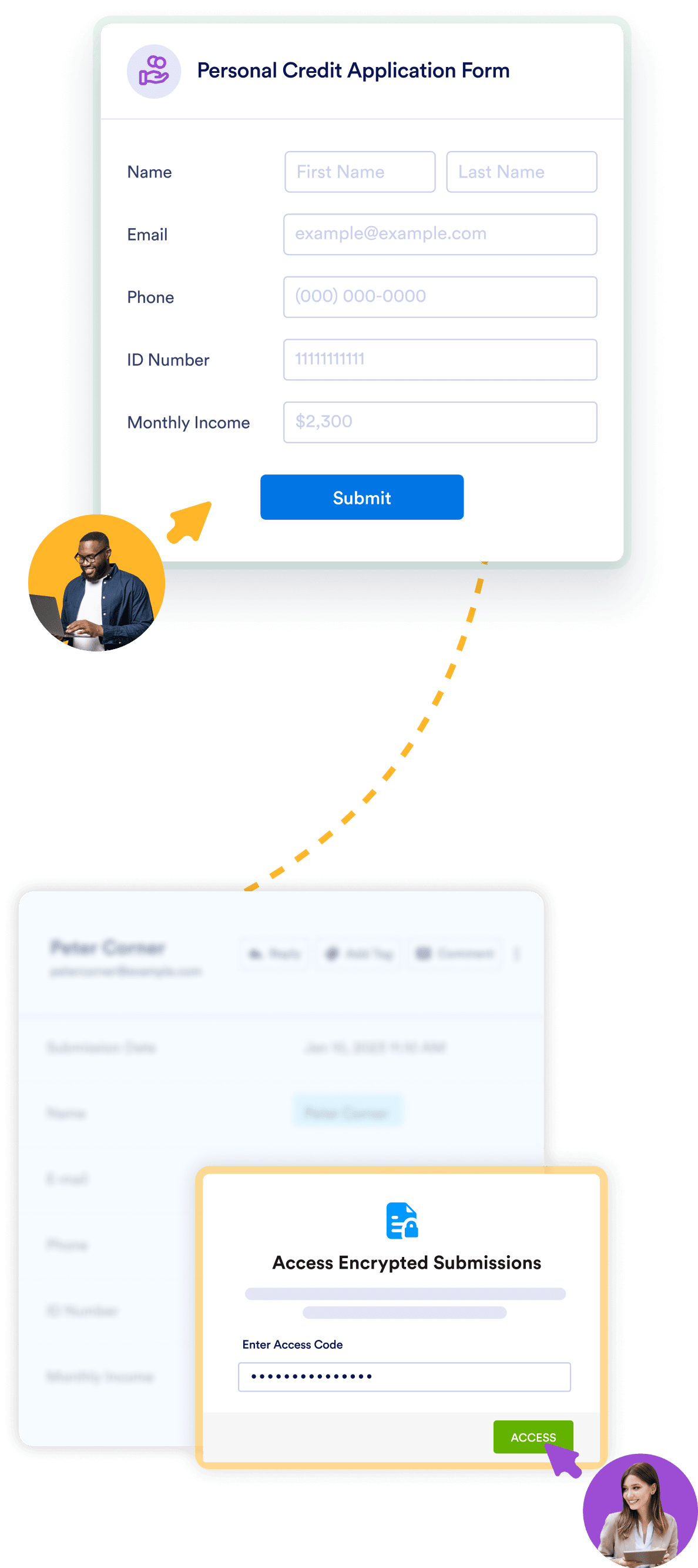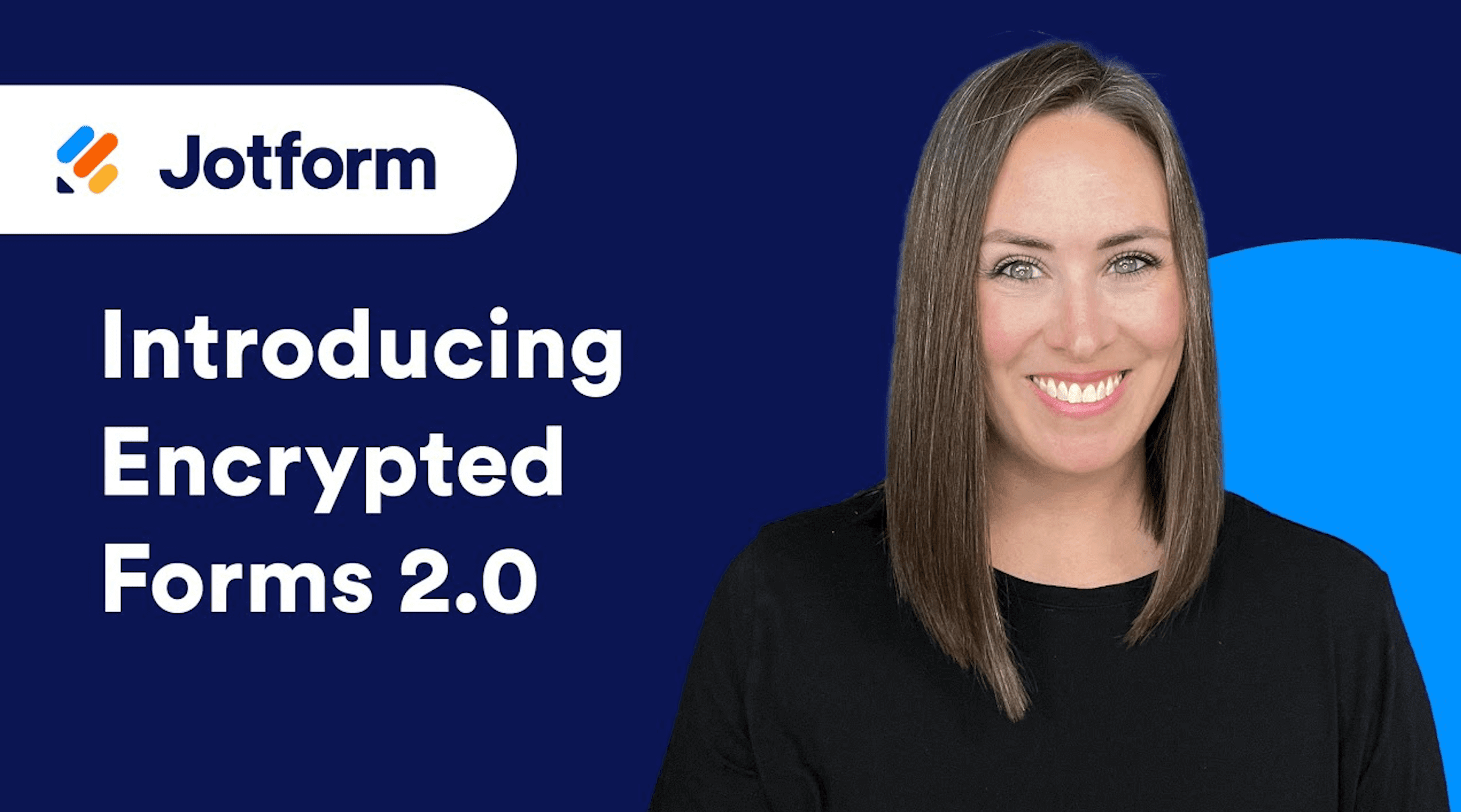Next-Level Protection with Encrypted Forms
Keep your sensitive data secure by using Encrypted Forms 2.0 from Jotform. With end-to-end encryption, you can be confident that your submissions will always be secure with your access code.

ADD EXTRA DATA PROTECTION
How Encrypted Forms 2.0 Works
Encrypt your form
Set an access code to protect your form responses.
Collect submissions securely
User submissions are kept secure and can’t be accessed by anyone else.
Access your data
View your responses with your access code.
Protect your data with end-to-end encryption
Ensure that your submissions are secure with Jotform’s end-to-end encryption. Only you, or those you’ve shared your access code with, can view your submissions. No one else, not even Jotform, can see your submissions.
Streamline your security practices
Our new encryption and decryption process is significantly faster, regardless of the size of your submissions. Not only is our encryption method secure and private, it also saves you time and energy.
Effortlessly access data
To view your submissions, simply use the access code you created during the encryption process. With this unique and secure access code, you can rest assured that your submissions will stay confidential and accessible only to you.
Access encrypted data
on the go
All Jotform forms are mobile-ready by default, so you can easily build encrypted forms on the go. View encrypted data with your access code on your mobile device and even accept submissions offline.
Free Starter Plan
Form encryption is also available for Jotform users on our free plan!
Learn More About Encrypted Forms
-
What is data encryption?
Data encryption is the process of encoding data. Once data is encrypted, it can only be read after it’s been decrypted. This process is used to protect information both when it’s transferred between a browser and a server and when it’s being stored. Data encryption is particularly useful for sensitive information that needs an additional layer of security.
-
What are the types of data encryption?
-
Can form data be encrypted?
-
What is the difference between a secure form and an encrypted form?
-
Which technology does Encrypted Forms 2.0 use?
-
What is end-to-end encryption?
-
What are the major benefits of this feature?
-
How can you enable form encryption for your forms?
-
What will happen to previously encrypted forms?
-
Which features are disabled when you enable encrypted forms?
